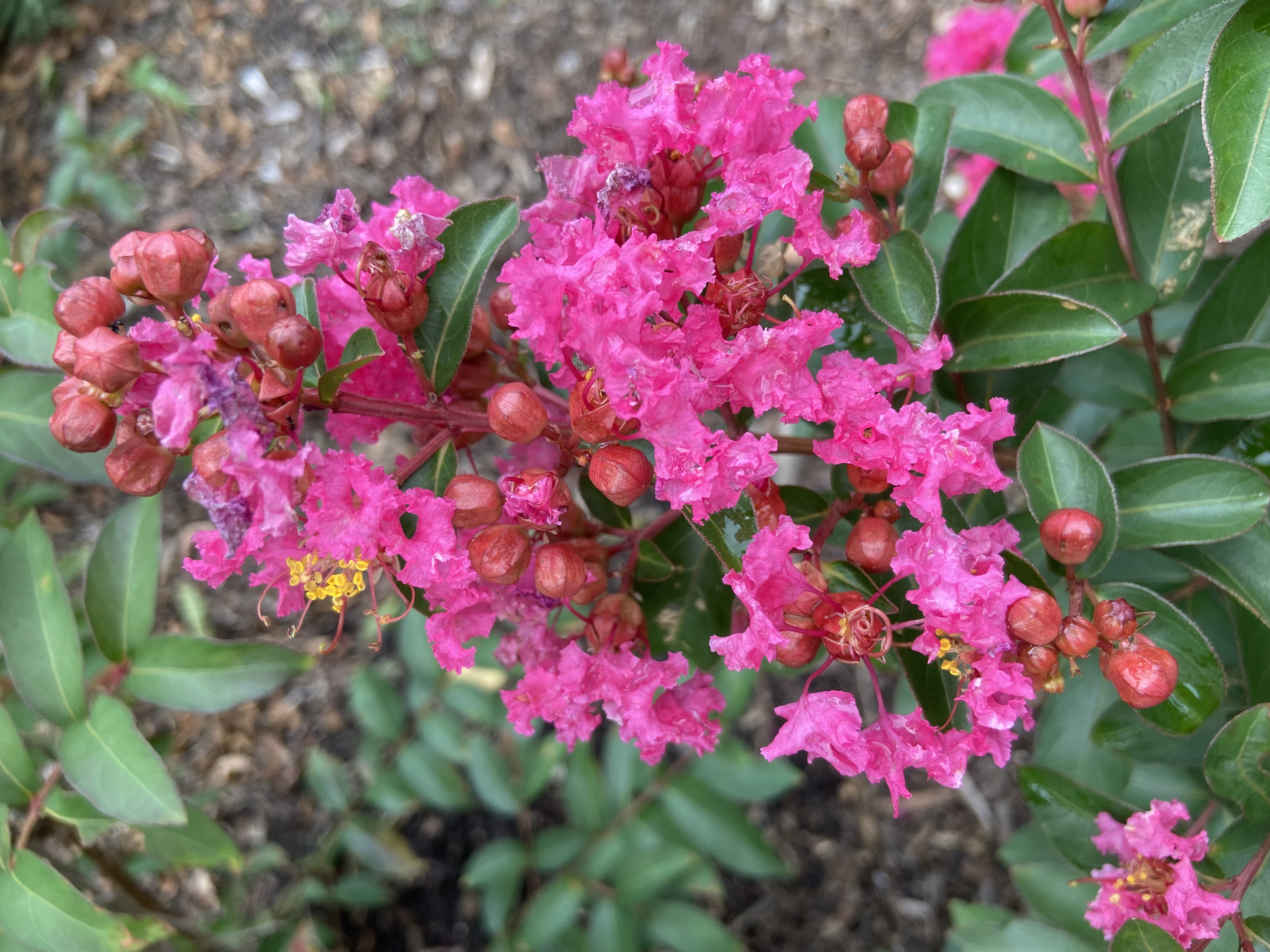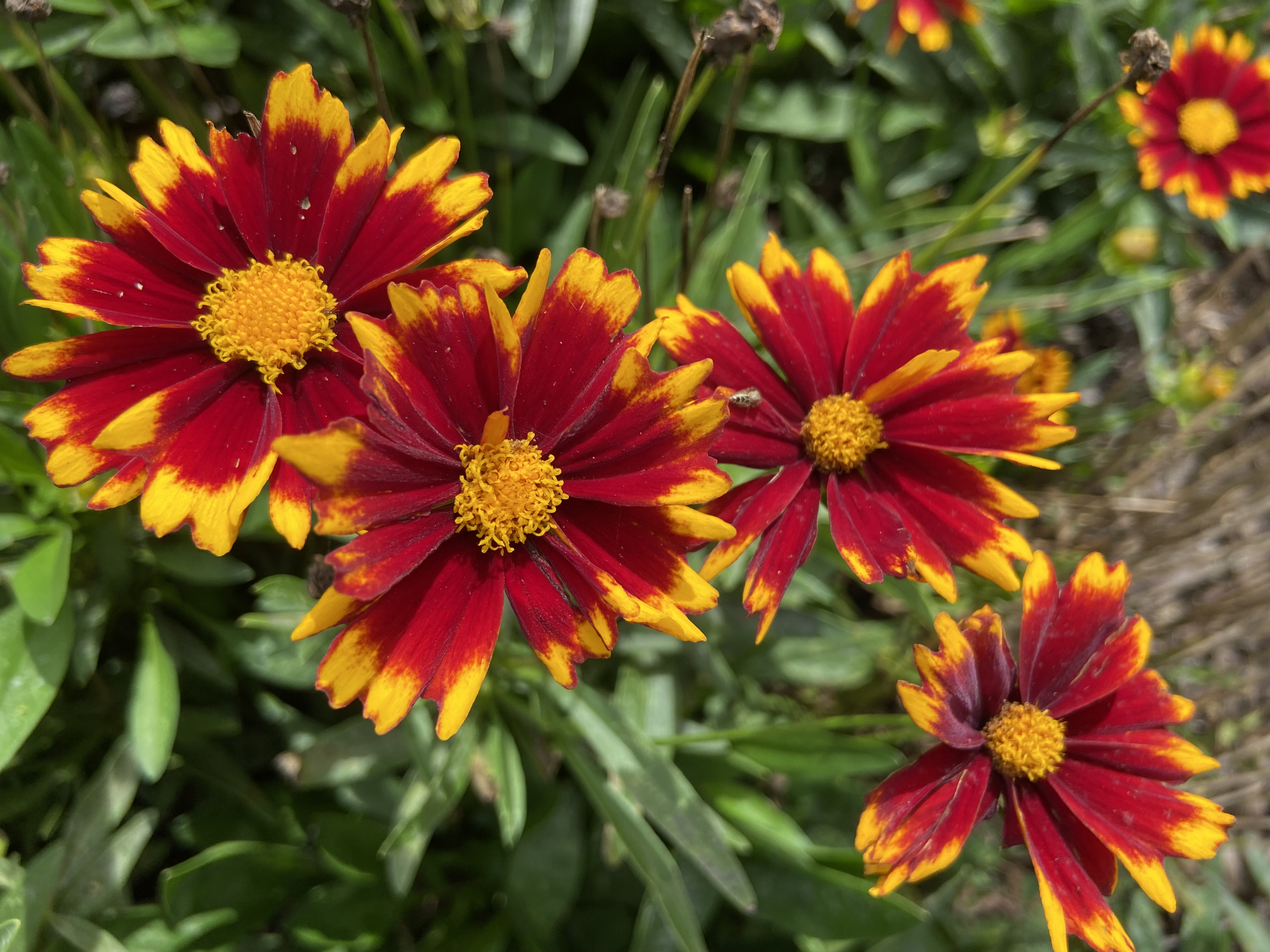Perennials Trial Report
North Carolina State University
Raleigh, North Carolina
2021–2022
JC Raulston Arboretum at North Carolina State University
Raleigh, North Carolina
Mark Weathington
Director
Bernadette Clark
Agricultural Research Technician
Department of Horticultural Science
JC Raulston Arboretum
Table of Contents
General Introductory Notes and Acknowledgements
Understanding Our Data
Climate Graphs
Plant Material Sources
Results
General Introductory Notes and Acknowledgements
The Perennials Trial are located adjacent to the Color Trials at NC State University within the JC Raulston Arboretum (JCRA) in Raleigh. The JCRA is a ten and a half acre site administered by the Department of Horticultural Science and located on 35° 47'N latitude, longitude 78° 42' W, with an elevation of 400'.
Plants to be entered into our trials are received in one of three ways—seeds, rooted cuttings/plugs or finished plants/pot. Virtually all are grown within controlled greenhouse environments prior to placement in protected outdoor structures for hardening off. Plant spacing in the trials is based on the estimated mature size of entrant that fits to a 4' × 4' area or by the number of plants sent. Each entry is evaluated for two complete calendar years, being removed after the spring flush in year three. After the plants are established, they are evaluated for hardiness and landscape performance with ratings regularly taken.
Acknowledgements
We thank the vegetative and seed companies that participate in our trials. The services we provide would not be possible without the cooperation and support of these companies. We appreciate this confidence and trust and we look forward to continuing our partnership.
Lastly, we are thankful to other departmental staff and the volunteers of the JC Raulston Arboretum who assisted in transplanting and maintaining the plants … we couldn't have done it without you all!
Participants
2020
Must Have Perennials
Sakata Seed America
Terra Nova Nurseries
2021
Ball Seed Co.
Must Have Perennials
Gardenchoice
Terra Nova Nurseries
We also thank the following companies for their support of material donations:
- BASF, 26 Davis Drive, Research Triangle Park, NC 27709
- Sun Gro Horticulture, 4731 Homestead Place, Matthews, NC 28104
Understanding Our Data
Cultural Data
Trials are conducted in amended beds. Prior to planting, beds are fertilized with 10-10-10 granular fertilizer and tilled. All plant material is mulched with composted leaf mulch to a 2"–3" depth after planting. Pre-emergent herbicides are used at the initial planting and repeated each subsequent spring/summer season. Hand weeding is done at all other times. Later in the season, a post-emergent herbicide application along the edge of the beds was done on an as needed basis. An in-ground irrigation system delivers 1"–1.5" of water to the beds each week. Plant height and width measurements (recorded in inches) are taken during the growing season. Data was collected from a representative plant, not the largest or the smallest but an average plant. Dormant plants were cut back in the fall/early winter to clean up the area and reduce overwintering habitat for insects and diseases.
Evaluations
The purpose of our perennials trial is to evaluate the plant material under conditions unique to our location. Our summer growing conditions are typically hot temperatures with high humidity. There is little nighttime temperature relief/recovery; average summer nighttime temperatures can be in the 70s. During our winters we can experience wide and rapid fluctuations in temperatures. Irrigation is required all season.
What do we look for?
- General Plant Growth – healthy appearance, attractive foliage, uniform growth
- Flowers – floriferousness, bloom duration, uniform color, does it hold up after a heavy rain
- Pests and diseases – any visible evidence of damage: distorted or chewed foliage
- Heat tolerance – do the flowers and plants hold up in the heat, does the flower color fade or stripe
- Hardiness (survival) – determined (in the spring) by the number of plants that made it through or emerged after the winter
Installation Date
Most entries were planted into their permanent trial location on:
- 2020 entries on May 22, 2020
- 2021 entries on May 11, 2021
Entries that Did Not Survive
Died 2020
Echinacea (Puff Vanilla)
Geum (Pretticoats Peach)
Geum (Tempo Yellow)
Helichrysum (Red Jewel)
Iberis sempervirens (Snow Cone Forte)
Leucanthemum maximum (Birdy)
Died 2021
Buddleja (Butterfly Gold)
Delosperma (Orange Crush)
Echinacea (Lovely Lolly)
Primula ×polyantha (Lighthouse Blue, L. Rose, L. Yellow)
Lysimachia congestiflora (Firefly)
The best way to really evaluate our trials is to come in person. The JCRA is open 365 days a year.
Average Monthly Precipitation and Temperature


The 2021 summer season growing conditions were mild. The rain at times was significant, but not record breaking (generally a result of tropical depressions or hurricanes). Our greatest daily amount of rainfall, 3.3", occurred on July 9.
We did not have any 100° days. We had fifty 90°F+ days with the warmest being 97°F occurring on August 29. We had three long stretches of 90°+ days that occurred from May 22 through May 28, July 6 through July 17, and August 19 through August 31. August had the most 90°+ days at 18 days.
Our winter weather started out as warm and dry then was replaced by a much cooler and wetter pattern in January then flipped back to warm and dry. We had three impactful winter storms in January (3, 16, and 21) making it one of the snowiest months in many years. Greatest snowfall was 2.7" on January 21. The period from December 2021 to February 2022 ranks as our 15th-warmest and 33rd-driest winter since 1895 when recordkeeping started. Spring finished with a summer-like feeling as hot weather had a firm foothold in May. Our first 90-degree day of the year occurred on May 19. May ended with six days at or above 90°F. This was our 10th-warmest spring since 1895. Spring had 31 days with high temperatures at or above 80°F.
Seed and Plant Material Sources
Ball Seed Co., 622 Town Road, W. Chicago, IL 60185
GardenChoice, 939 Helen Ruth Drive, Fort Wright, KY 41017
Must Have Perennials, 115 Third Street SE, Barberton, OH 44203
Sakata Seed America, 18095 Serene Drive, Morgan Hill, CA 95037
Terra Nova Nurseries, 10051 S. Macksburg Road, Canby, OR 97013
Please get in touch with these companies if you have specific questions regarding individual species and cultivars.
Trial Results
Perennials Planted in 2020
Perennials Planted in 2021
Lagerstroemia
GreatMyrtle Red Velvet dwarf crepe myrtle
- Company
- GardenChoice
- Year Planted
- 2021
- Height
- 11"
- Spread
- 13"
- Number Planted
- 5
- Survival
- 100%
Comments
Compact plants; mounded habit; nice branching; the last to bloom in the GreatMyrtle series; clusters of red colored flowers from late spring then sporadically through early fall; minor issue with Japanese beetles; low maintenance.

Lagerstroemia 'Cherry Delight'
GreatMyrtle crepe myrtle
- Company
- GardenChoice
- Year Planted
- 2021
- Height
- 12"
- Spread
- 14"
- Number Planted
- 5
- Survival
- 100%
Comments
Compact plants; mounded habit; nice branching; prolific flowering; clusters of attractive deep cherry red colored flowers from late spring then sporadically through early fall; low maintenance.

